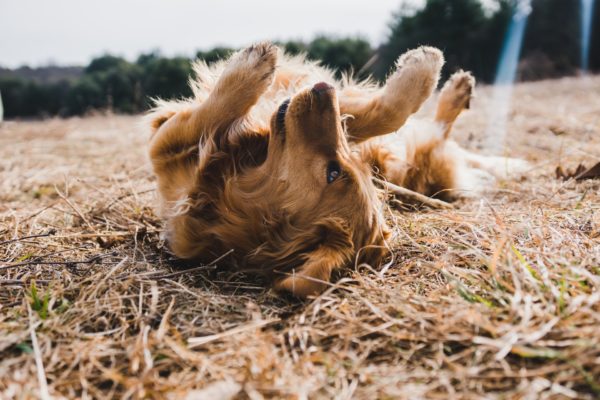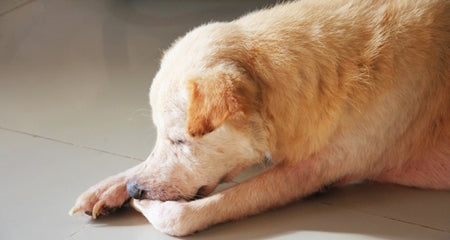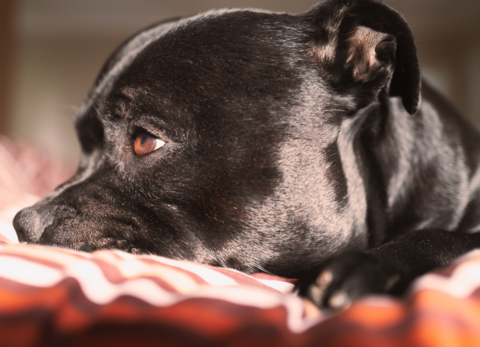
Considering their microscopic size, fleas can create huge problems for your dog and household. Fleas are the most common external parasite of pets, and they thrive by drinking your dog’s blood and multiplying fast. What should you do if your dog gets fleas and how can you prevent a flea infestation in the first place? Here’s what pet parents need to know about fleas on dogs.
What are fleas?
Fleas are small insects—considered parasites—that survive by feeding on animal or human blood. Adult fleas are about 1/8 of an inch long and their eggs, the size of dust particles, can barely be seen with the naked eye. Fleas are dark reddish-brown in color and have biting mouth parts. They can be very hard to spot because they move so fast along the animal’s body.
Flea bites can cause discomfort, itchiness, and irritation. Many dogs are allergic to flea saliva and can get extremely itchy after even just one bite. Excessive itching is not only unpleasant for your dog but can cause much more serious issues like hot spots and infections.
In addition to causing itching and other skin problems, fleas can transmit diseases and cause anemia. In heavy infestations, especially in young or unhealthy dogs, the blood loss caused by fleas can be significant. A single female flea can consume up to 15 times her body weight in blood over the several weeks of her adult life. In addition, fleas can carry several diseases, including plague
Unfortunately, fleas also act as hosts for another unwanted parasite: tapeworms. Dogs ingest fleas while biting at an itchy spot or grooming themselves or another dog. When a dog eats a flea containing tapeworm eggs, the eggs move into your dog’s small intestines, where they hatch and mature into adults.
How do you know if your dog has fleas?
These little parasites can be tricky to spot, but some of the signs that your dog has fleas are obvious. If your dog is suffering from fleas, you may notice:
- Severe itching, particularly in the rear areas of your dog’s body where the coat is thick and your pup cannot easily reach. Your dog may bite and chew their skin in addition to pawing at itchy areas. Fleas like to infest the neck, ears, lower back, abdomen, and base of the tail in dogs.
- Skin irritation and hair loss is common if your dog has been scratching for a while. Fleas leave tiny, red, raised dots on your dog’s skin. They are typically smaller than other insect bites, although they can become inflamed after a dog scratches. Some dogs have a stronger reaction to flea bites than others, which creates a much larger red area. Look for red bumps on your pet’s groin, belly, under the legs, or at the base of their tail. Leaving fleas untreated can lead to lesions, scabs, infection, and hair loss in infested and itchy areas.
- Visible fleas in your dog’s coat may be seen while combing your dog with a flea comb. These tiny parasites measure approximately 1-to-3 millimeters in length, but their dark brown or black bodies are relatively easy to see moving around, especially on light colored dog hair or skin.
- Black flecks, or “flea dirt,” in your dog’s coat, can be a tell-tale sign that your dog has fleas. These tiny flecks are flea droppings and will be present on your dog’s skin and coat if they are suffering an infestation. These specks are actually dried blood, and if you place them on a damp paper towel they will turn from black to brown and then to red as the blood rehydrates.





